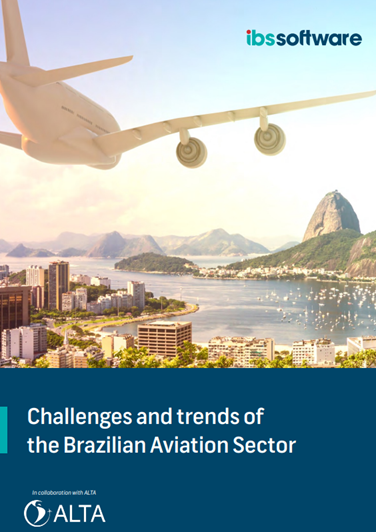Source: ALTA
- The study shows that Brazil has the 5th largest airspace in the world, but aviation accounts for only 18% of its means of transport
According to the research conducted by journalist Fabio Steinberg in a study commissioned by IBS Software, supported by ALTA (Latin American and Caribbean Air Transport Association), Brazilian aviation is much more than a means of transportation. Its benefits extend to a broad value chain that generates development and opportunities, even in remote locations.
“I am enthusiastic about the future of aviation in Brazil. There are challenges, but there are many more opportunities. The key is to continue working with a State Agenda in the country that must include authorities, airlines, airports, service providers, and associations. Together we can find more efficient ways to deliver better essential services to the population,” stated José Ricardo Botelho, Executive Director & CEO of ALTA.
The report outlines an industry overview based on data research and interviews with more than 30 relevant market players. It also identifies challenges and opportunities for Brazilian aviation.
The Opportunity
Brazil records 0.5 air trips per person per year on average, a meager figure if it is compared to those reported in the United States (2.6), Spain (4.5), or Chile (1.2). This indicates considerable growth potential, especially considering the size of the Brazilian population, its economy, and the territorial dimension of the country.
The post-pandemic reality has led people to opt for places with nature and the outdoors. In this sense, Brazil has a lot to offer for its fantastic diversity. However, moving to and within the country depends almost entirely on air transport. Of Brazil’s 5,500 municipalities, only about 130 are covered by commercial aviation routes. According to the National Civil Aviation Agency (ANAC), from January to August 2022, 53 million passengers on domestic flights and 1.4 million on international flights used 213 Brazilian airports on scheduled flights. This represents a growth of 49% in domestic flights and 355% in international flights compared to the same period last year.
Amon the Challenges
According to ABEAR, the service quality provided by Brazilian airlines is comparable to that of U.S. airlines when evaluated in terms of punctuality and regularity. Also, passenger complaints about the services of airlines operating in Brazil are similar in both countries. However, the difference in the formalization of complaints in Brazil and, consequently, in the prosecution of litigation is considerable.
For example, according to a study by IBAER, about 98.5% of lawsuits against North American airlines worldwide occur in Brazil. The increase in these cases is also striking; in 2017, there were 42,000 cases. In 2022, the cases increased fourfold. And, if we consider that one legal case in Brazil costs the equivalent of 17 airline tickets, we can see why this item significantly impacts the overall cost structure of airlines.
The aviation sector employs more than 140,000 workers in Brazil, 90% between 25 and 64 years old. It is a sector that directly, indirectly, and indirectly generates socio-economic welfare for the country and still has impressive potential after more than a hundred years of history. We invite you to consult this overview of Brazilian aviation here.

